
I am a self-confessed travel junkie, intent on dragging my children around the world. Between the three of us, we’ve racked up an impressive number of air miles and an environmental guilt trip as big as the hole in the ozone layer. Reassuringly, though, there is some optimistic news for Planet Earth: Sustainable tourism is a rapidly growing sector of the travel industry. Being responsible has become de rigueur.
I recently took my children, Ellis and Jemima, to Mexico’s Yucatán Peninsula for a slice of eco-pie along the Riviera Maya. We flew into the lively town of Cancún, then made our way straight to the Riviera Maya, which extends 75 miles south of Cancún to the laid-back archaeological town of Tulum. A pencil-straight highway connects the two, making renting a car and exploring a breeze.
The first stop on our journey was the Banyan Tree Mayakoba, which is part of a development 45 minutes south of Cancún that has won many awards for its thoughtful, eco-friendly approach to tourism. The Banyan Tree is outfitted with every luxury imaginable, including private plunge pools in each of the 123 jaw-dropping villas.
The following morning, we jumped aboard the resort’s elegant boat and rode through a maze of mangrove waterways to breakfast, spotting a staggering array of exotic birds. With six miles of trails and rivers in a 1,600-acre wildlife sanctuary, it was impossible not to get up close and personal with the region’s indigenous species.
At the eco-archaeological park Xcaret, the emphasis is on culture and history. We cooled off in a long underground river, which looked like something straight out of Jurassic Park, with towering, moss-covered walls and cascading waterfalls. Budding geologist Jemima ran her little hands along the sedimentary rock walls as we passed, tracing the embedded marine fossils. Floating through ancient caves into shafts of brilliant sunlight was entirely representative of the primordial beauty and life force that flows above and below ground throughout the Yucatán.
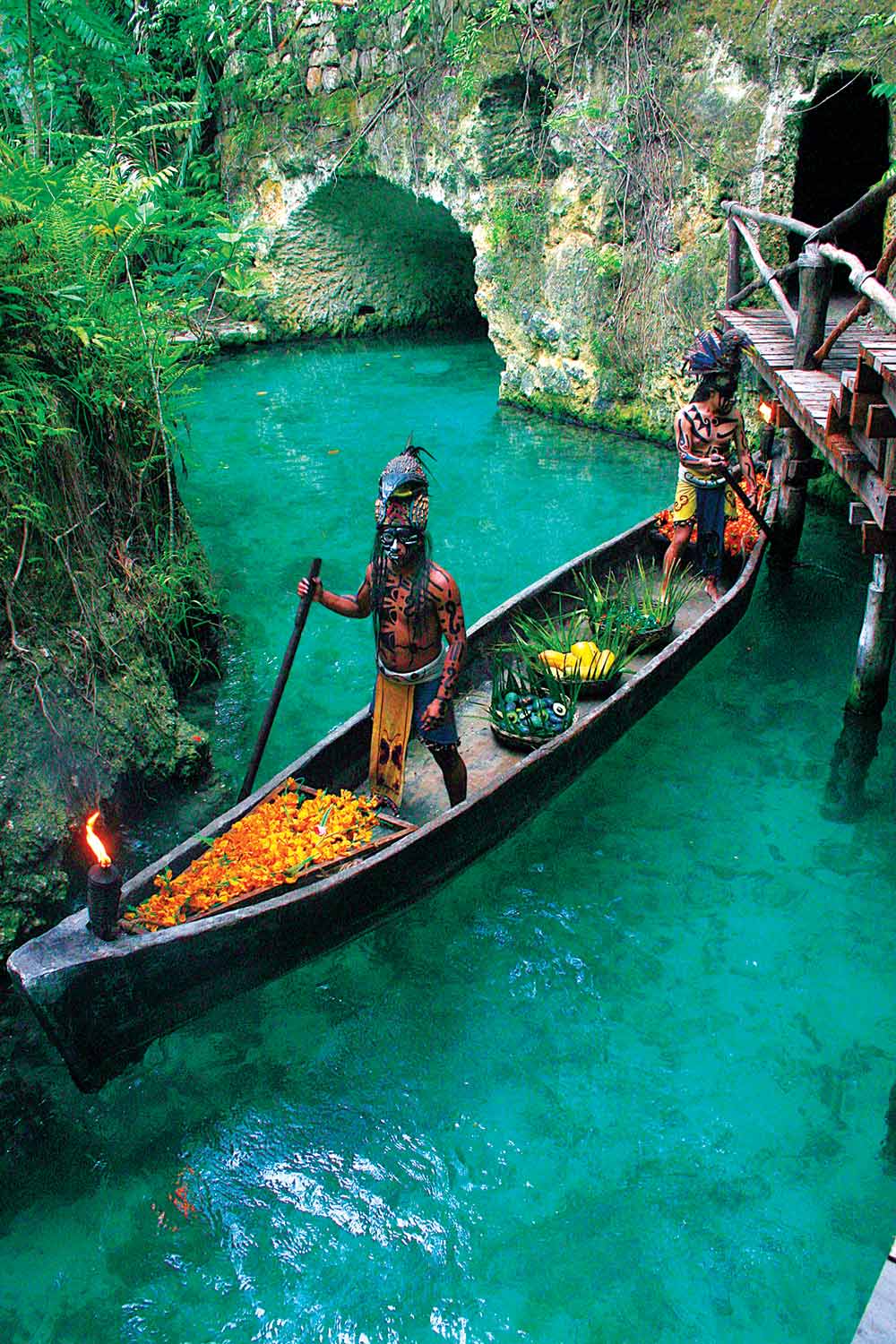
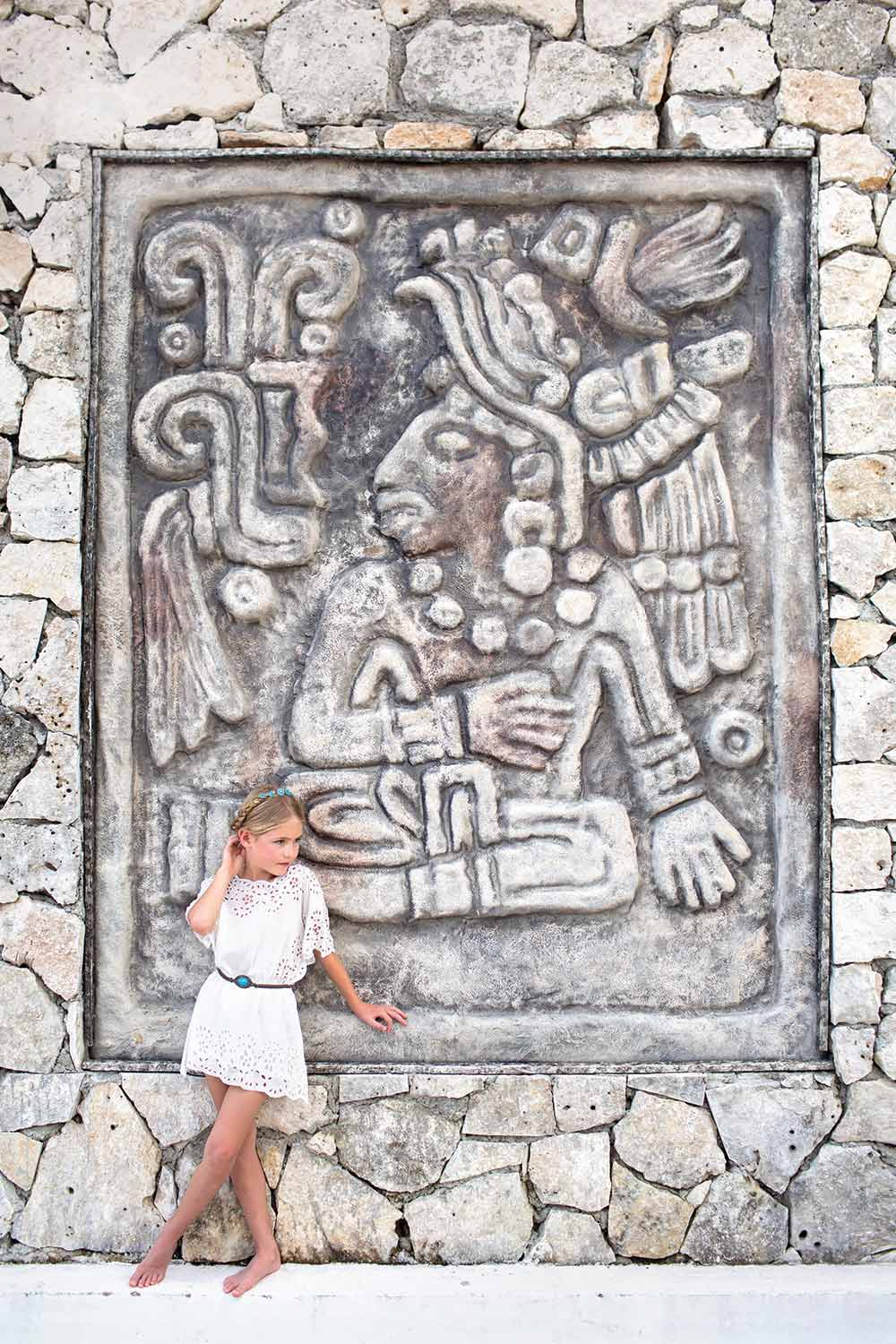
Xel-Há is another park that shouldn’t be missed. Its beautiful coves and inlets, where salt and fresh waters meet, provide a vast natural aquarium where kids can snorkel safely among thousands of tropical fish. We floated on inner tubes through tangled mangroves, held toucans and parrots and ziplined into the crystalline waters.
Many smaller attractions on the Riviera Maya operate on government land grants called ejidos and provide a personal, affordable experience. Supporting them also means that you’re giving back to the local community. Boca del Puma eco-park is fabulous for kids who are hankering for an adrenaline rush. My two flew confidently above the canopy on zip lines and explored by ATV across the bumpy jungle ground, and when our legs stopped shaking, we soaked them in the bottomless limestone pools.
Mexico’s most famous Mayan ruins, Tulum, are perched majestically on cliffs overlooking the Caribbean Sea. The children were fascinated by the Mayans’ unexplained disappearance and gory tales of human sacrifice. There was an eeriness walking around the remains of the once great city, with its memories of a less complicated existence.
The road beyond Tulum circumnavigates the Sian Ka’an Biosphere Reserve, which occupies nearly a million acres of protected land. For us, this meant a three-hour road trip to the next accessible coastal road. We passed through a couple of towns with ladies selling pineapple from tempting roadside shacks, but on the whole our games of I Spy were mostly repetitive: something beginning with J (jungle), something beginning with R (road).
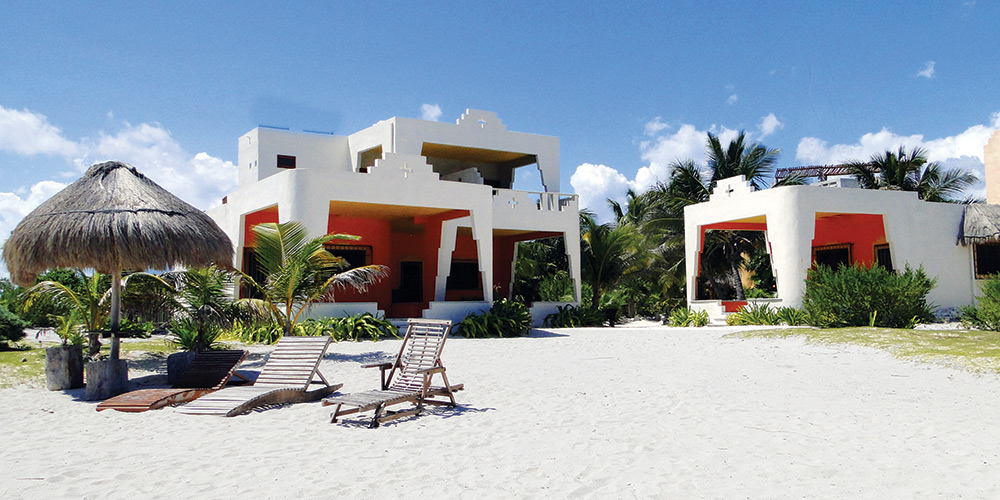
Our next stop, the Mayan Beach Garden Inn, is off the grid in every sense. It’s situated on a remote beach road, 30 minutes from the nearest town, has only seven rooms and uses solar power. Our cabana was just five steps from the ocean, with hammocks strung across a deck.
We acclimatized quickly to the slower, leisurely pace, waking at sunrise and going to bed at sunset, lulled to sleep by the sound of the waves. Time didn’t exist, nor did technology. We explored mile upon mile of deserted beaches, collecting sea beans and stray dogs, and took interactive Mexican cooking classes with the chef on lazier afternoons. At night, we followed the moonlit sand paths to deliciously fresh home-cooked dinners.
The nearby coastal town of Mahahual is reminiscent of an early Ibiza, with laid-back beach bars playing chill-out music and rustic boutique hotels. You can rent bicycles, eat fresh sweet corn from street peddlers, paddleboard, play water polo, get a massage on the beach for a fiver, swim with dolphins or take a boat trip out to the Chinchorro Reef. I’d put my stake in the ground that Mahahual is the most beautiful, easygoing, kid-friendly beach in the Yucatán.
An hour and a half from Mahahual is one of the world’s most gorgeous lakes. Fed by underground rivers, Lake Bacalar — also known as the Lake of the Seven Colors due to its impossibly vibrant aquamarine hues and clarity — simply has to be seen to be believed.
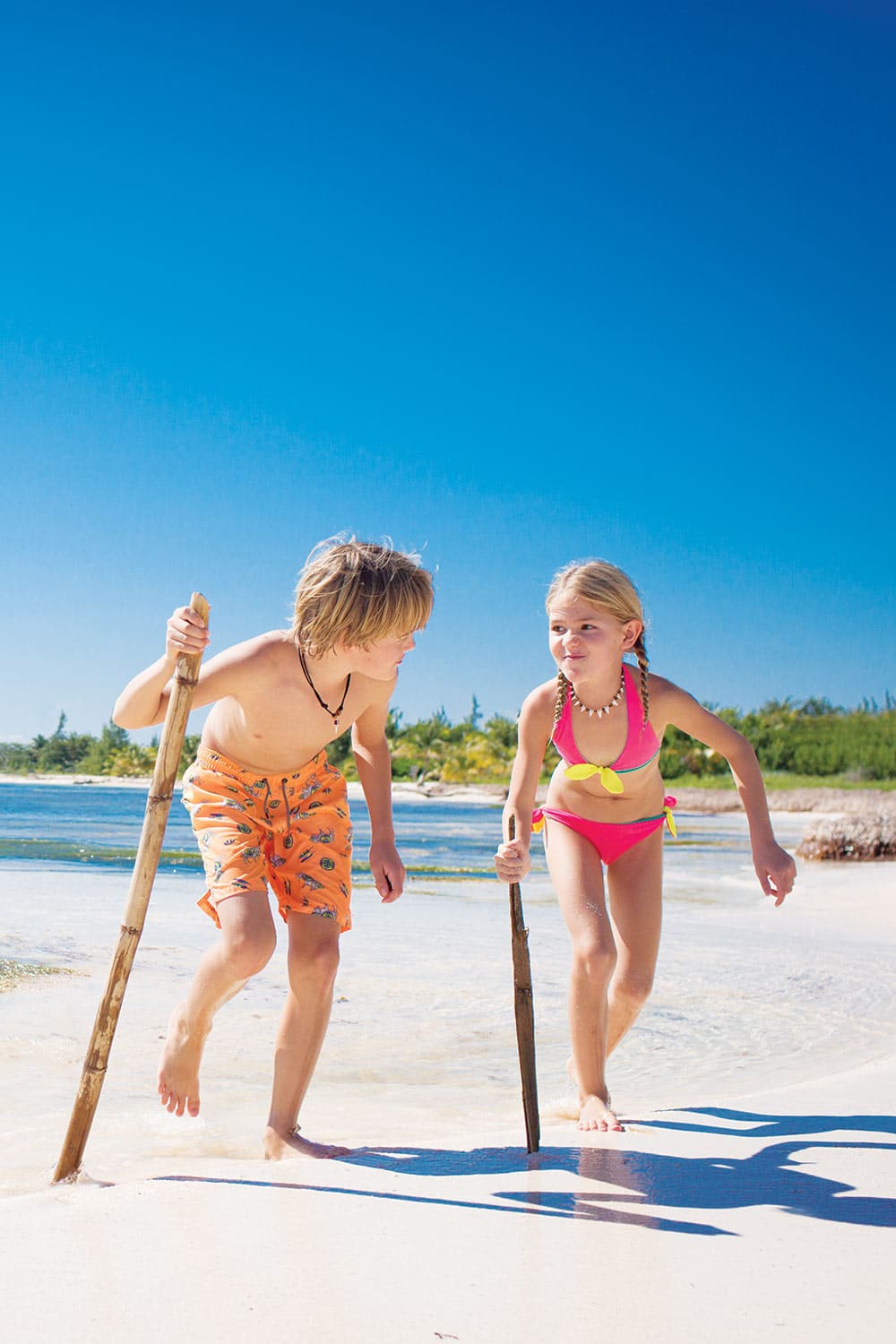
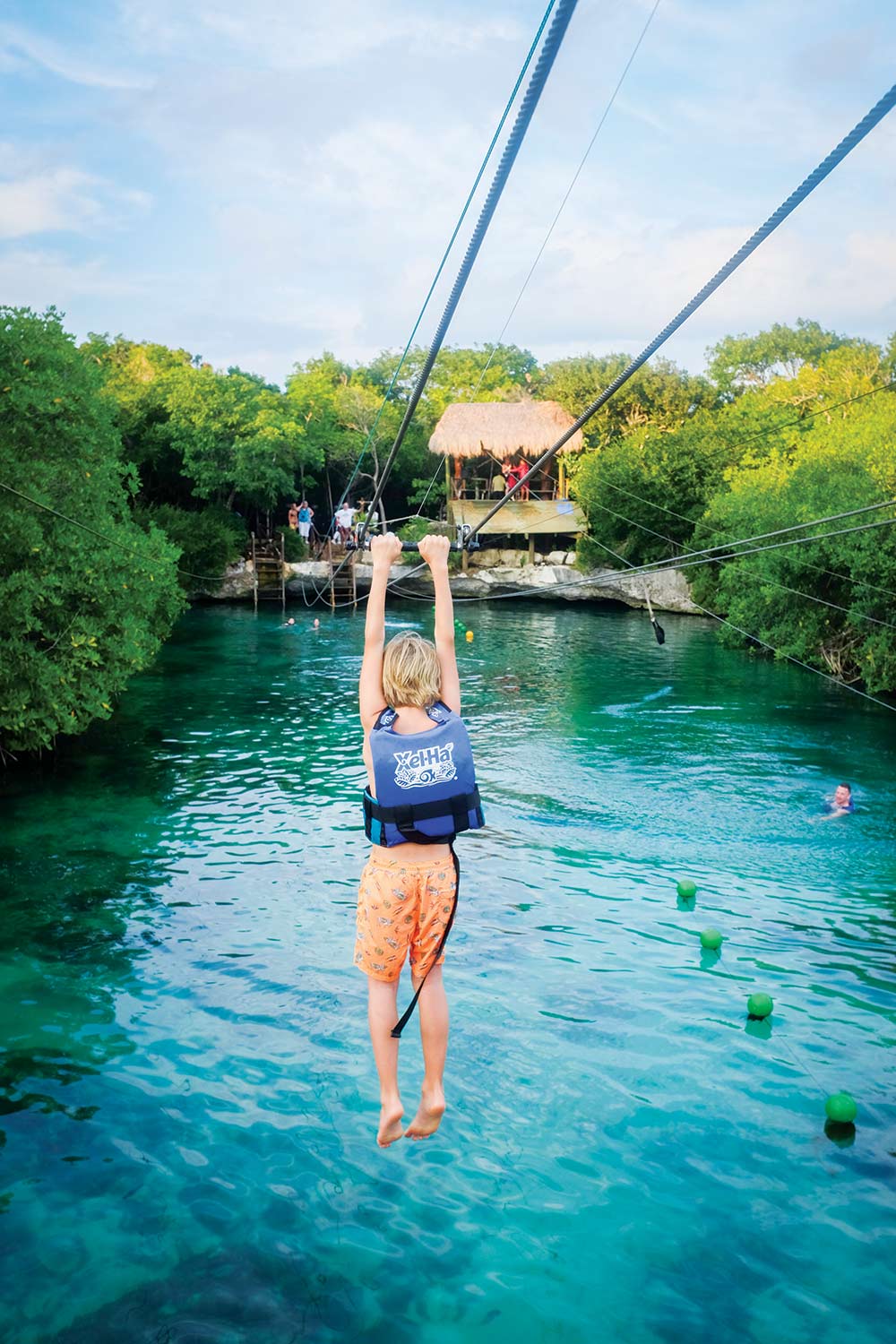
I booked our last night at the Jolie Jungle, a bio-constructed hotel 45 minutes south of Cancún. Our room had a floating double bed canopied by a mosquito net strung from a 25-foot thatched palm roof. The restaurant was a towering, open-sided Swiss Family Robinson affair made from thick, gnarly logs, with hammocks on the upper deck. Walking to dinner, the kids got excited when they spotted the pool, beautifully contructed among the trees from boulders and recycled wood. And that’s where we spent our last afternoon: by the pool, making friends with the only other guests, a Swedish couple with two kids.
Staying in remote parts of the Yucatán was an eye-opener. When the owner of the Mayan Beach Garden Inn told me about the washed-up plastic on the beaches, I challenged my kids to collect interesting bits of flotsam one morning. They returned devastated at the sight of dead birds tangled up in debris. “How can we fix it?” they asked. I didn’t have an answer. Can being more environmentally conscious really make a difference? I recommend taking your own children to see the cost of putting our heads in the sand before you answer that for yourself.
By Abi Campbell
The Riviera Maya is located on Mexico’s Yucatán Peninsula and stretches 75 miles south of Cancún along the coast. The area includes landmarks like the Tulum ruins and the Sian Ka’an Biosphere Reserve.